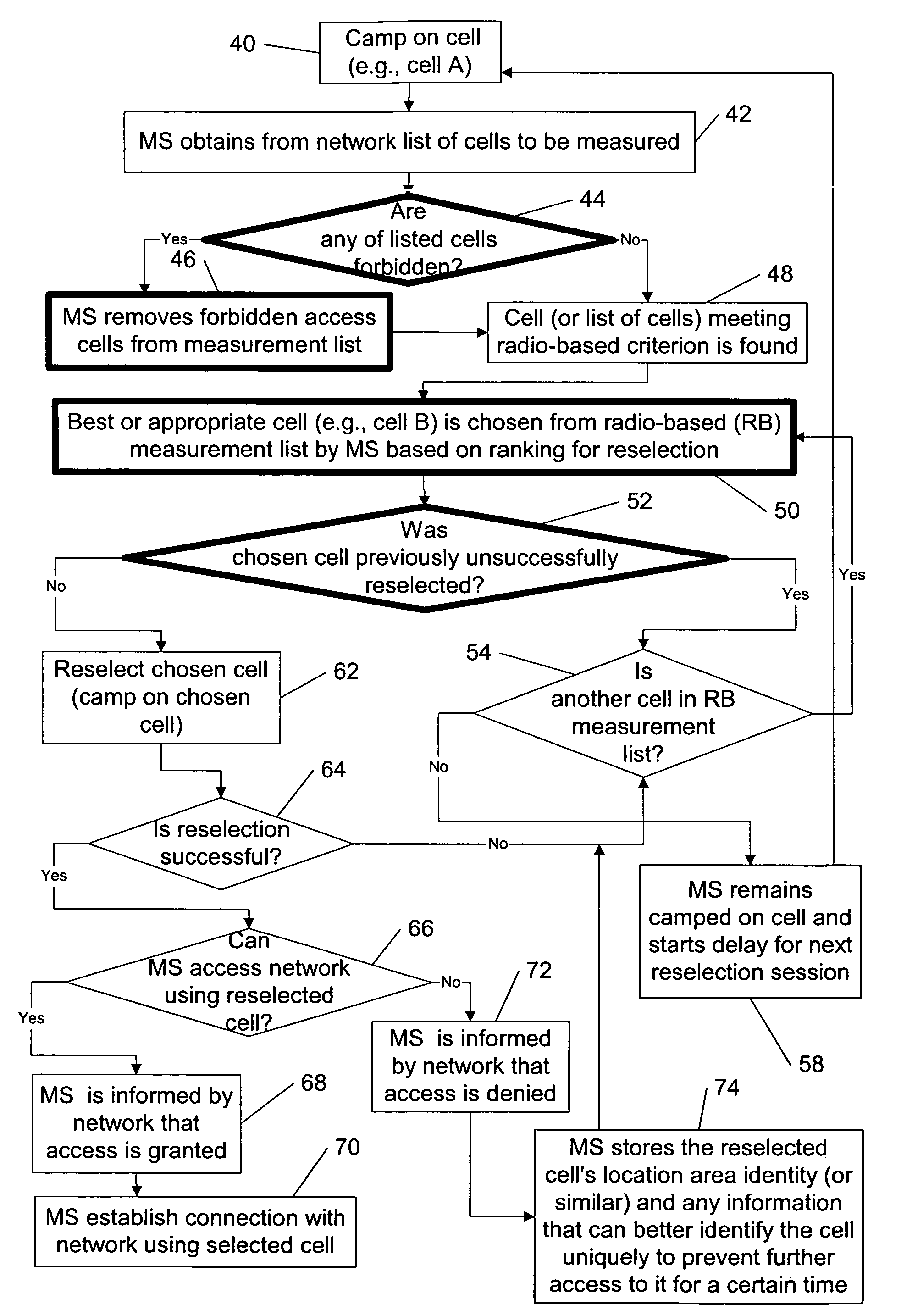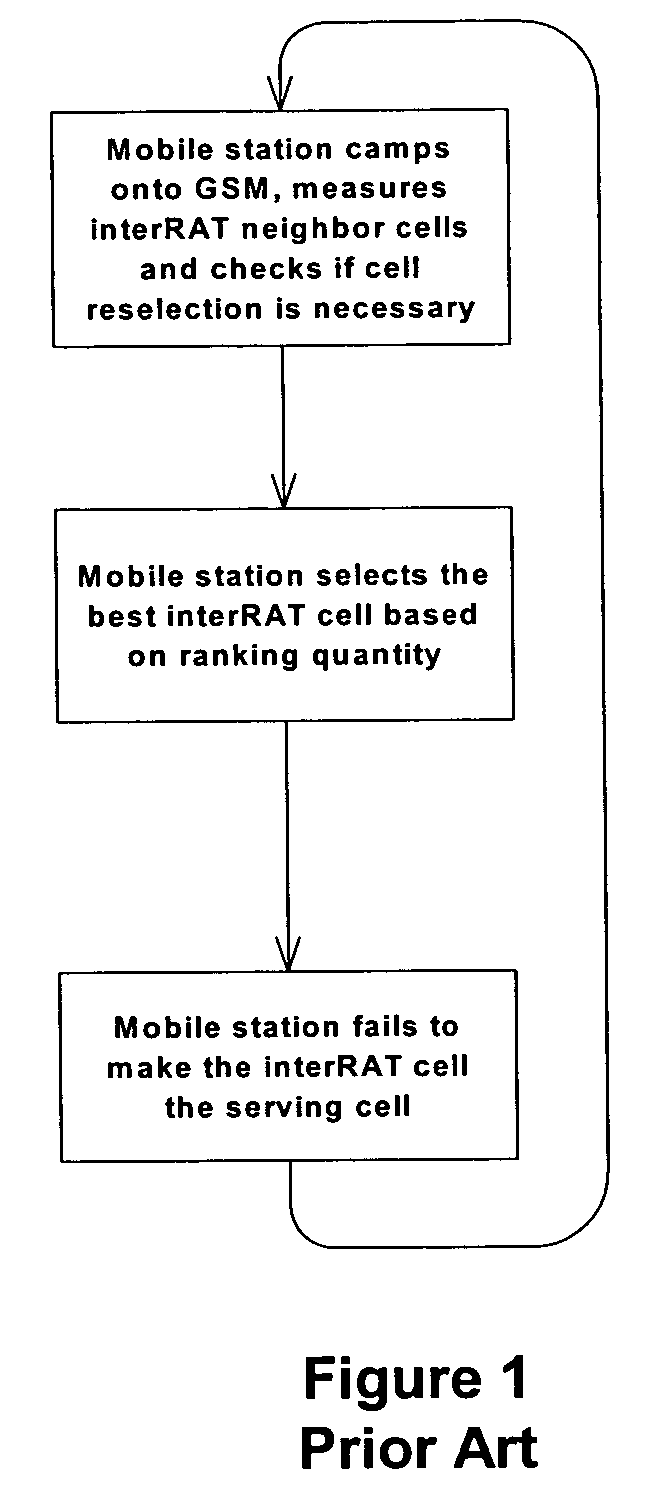Cell reselection for improving network interconnection
a cell and network technology, applied in the field of mobile communications, can solve the problems of wasting power resources, insufficient lai information to uniquely identify a cell, and prior art that does not provide guidance on how the ms could handle this situation, so as to improve network interconnection and interoperability.
- Summary
- Abstract
- Description
- Claims
- Application Information
AI Technical Summary
Benefits of technology
Problems solved by technology
Method used
Image
Examples
Embodiment Construction
[0046]The present invention provides a new methodology for a cell reselection by a mobile station (MS) for improving network interconnection and interoperability in a limited mobile access environment. The present invention is applicable to any kind of networks and their interconnections. For example, it can be applied in the area of GSM / GPRS (general pocket radio service) and UTRAN interoperability or it can be applicable to interoperability between other intersystem technologies such as CDMA (code division multiple access) and WLAN (wireless local area network). A mobile station can be a mobile terminal, a user equipment, any type of a mobile communication device, a mobile phone, etc.
[0047]The invention describes how the MS can better recover from failed intersystem cell reselection attempts so that there are fewer subsequent failed attempts. The battery lifetime will be improved through the optimization of measurements and cell reselection evaluation algorithm. The solutions also...
PUM
 Login to View More
Login to View More Abstract
Description
Claims
Application Information
 Login to View More
Login to View More - R&D
- Intellectual Property
- Life Sciences
- Materials
- Tech Scout
- Unparalleled Data Quality
- Higher Quality Content
- 60% Fewer Hallucinations
Browse by: Latest US Patents, China's latest patents, Technical Efficacy Thesaurus, Application Domain, Technology Topic, Popular Technical Reports.
© 2025 PatSnap. All rights reserved.Legal|Privacy policy|Modern Slavery Act Transparency Statement|Sitemap|About US| Contact US: help@patsnap.com



